
Dance is a performing art form consisting of sequences of movement, either improvised or purposefully selected. This movement has aesthetic and often symbolic value. Dance can be categorized and described by its choreography, by its repertoire of movements, or by its historical period or place of origin.
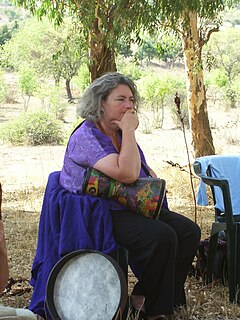
Starhawk is an American feminist and author. She is known as a theorist of feminist Neopaganism and ecofeminism. She is a columnist for Beliefnet.com and for On Faith, the Newsweek/Washington Post online forum on religion. Her book The Spiral Dance (1979) was one of the main inspirations behind the Goddess movement. In 2013, she was listed in Watkins' Mind Body Spirit magazine as one of the 100 Most Spiritually Influential Living People.

The history of dance is difficult to access because dance does not often leave behind clearly identifiable physical artifacts that last over millennia, such as stone tools, hunting implements or cave paintings. It is not possible to identify with exact precision when dance became part of human culture.
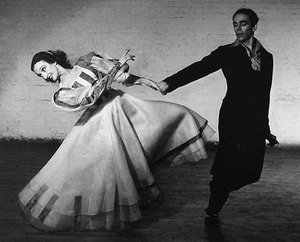
Doris Batcheller Humphrey was an American dancer and choreographer of the early twentieth century. Along with her contemporaries Martha Graham and Katherine Dunham, Humphrey was one of the second generation modern dance pioneers who followed their forerunners – including Isadora Duncan, Ruth St. Denis, and Ted Shawn – in exploring the use of breath and developing techniques still taught today. As many of her works were annotated, Humphrey continues to be taught, studied and performed.

The sleep cycle is an oscillation between the slow-wave and REM (paradoxical) phases of sleep. It is sometimes called the ultradian sleep cycle, sleep–dream cycle, or REM-NREM cycle, to distinguish it from the circadian alternation between sleep and wakefulness. In humans, this cycle takes 70 to 110 minutes.
Dance/movement therapy (DMT) in USA/ Australia or dance movement psychotherapy (DMP) in the UK is the psychotherapeutic use of movement and dance to support intellectual, emotional, and motor functions of the body. As a modality of the creative arts therapies, DMT looks at the correlation between movement and emotion.
Andrew Harvey is a British author, religious scholar and teacher of mystic traditions, known primarily for his popular nonfiction books on spiritual or mystical themes, beginning with his 1983 A Journey in Ladakh. He is the author of over 30 books, including, The Hope, A Guide to Sacred Activism, The Direct Path, the critically acclaimed Way of Passion: A Celebration of Rumi, The Return of the Mother and Son of Man. He was the subject of the 1993 BBC documentary "The Making of a Modern Mystic" and is the founder of the Sacred Activism movement.
Timothy James Fox is an American priest and theologian. Formerly a member of the Dominican Order within the Catholic Church, he became a member of the Episcopal Church following his expulsion from the order in 1993.

Sacred dance is the use of dance in religious ceremonies and rituals, present in most religions throughout history and prehistory. Its connection with the human body and fertility has caused it to be forbidden by some religions; for example, some branches of Christianity and Islam have prohibited dancing. Dance has formed a major element of worship in Hindu temples, with strictly formalized styles such as Bharatanatyam, which require skilled dancers and temple musicians. In the 20th century, sacred dance has been revived by choreographers such as Bernhard Wosien as a means of developing community spirit.
Neotantra, navatantra or tantric sexuality, is the modern, Western misinterpretation of tantra associated with new religious movements. This includes both New Age and modern Western interpretations of traditional Hindu and Buddhist tantric sex. Some of its proponents refer to ancient and traditional texts and principles, and many others use tantra as a catch-all phrase for "sacred sexuality", and may incorporate unorthodox practices. In addition, not all of the elements of Indian tantric practices are used in neotantra, in particular the reliance on a guru.
Reclaiming is a modern witchcraft tradition, aiming to combine the Goddess movement with feminism and political activism. Reclaiming was founded in 1979, in the context of the Reclaiming Collective (1978–1997), by two Neopagan women of Jewish descent, Starhawk and Diane Baker, in order to explore and develop feminist Neopagan emancipatory rituals.
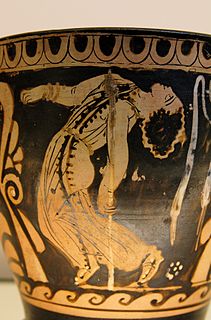
Ecstatic dance is a form of dance in which the dancers, sometimes without the need to follow specific steps, abandon themselves to the rhythm and move freely as the music takes them, leading to trance and a feeling of ecstasy. The effects of ecstatic dance begin with ecstasy itself, which may be experienced in differing degrees. Dancers are described as feeling connected to others, and to their own emotions. The dance serves as a form of meditation, helping people to cope with stress and to attain serenity.
Authentic Movement is an expressive improvisational movement practice that allows a group of participants a type of free association of the body. It was started by Mary Starks Whitehouse in the 1950s as "movement in depth".
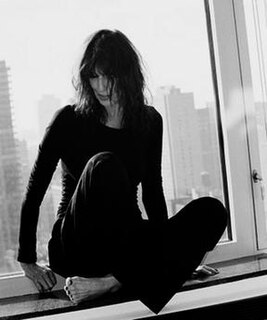
Gabrielle Roth was an American dancer and musician in the world music and trance dance genres, with a special interest in shamanism. She created the 5Rhythms approach to movement in the late 1970s; there are now hundreds of 5Rhythms teachers worldwide who use her approach in their work.
Movement Medicine is a movement meditation practice, intended to create an experiential and embodied connectedness with the world. It was developed by Susannah and Ya'Acov Darling Khan, who directed the Moving Centre School Europe, representing Gabrielle Roth and the 5Rhythms in Europe until 2007. Movement Medicine integrates physical, artistic, spiritual, shamanic and therapeutic practices so as to stimulate human creativity, healing and transformation, focussing on the relationship with ourselves, each other, the earth, and the spirit of life. It is non-denominational, aiming to answer the spiritual impulse without the need for dogma or belief. The Movement Medicine practice is meant to give people tools to integrate the freedom and aliveness of the dance into daily life.
Dancemeditation is a moving meditation system incorporating art, somatics and the mysticism of Sufism. The practice was developed in 1995 by Dunya Dianne McPherson after completing 1001 days of Sufi training with Sufi Master Adnan Sarhan. The materials resourced provide doorways and ignition points to embodied spiritual illumination, healing, and growth. Teaching Dancemeditation means to come from the embodied practices that have been honed within the practicing Dancemeditation community over the past 20 years.

Trance is a state of semi-consciousness in which a person is not self-aware and is either altogether unresponsive to external stimuli or is selectively responsive in following the directions of the person who has induced the trance. Trance states may occur involuntarily and unbidden.
Biodanza is a system of self-development utilizing music, movement and positive feelings to deepen self-awareness. It seeks to promote the ability to make a holistic link to oneself and one's emotions and to express them. Practitioners believe that Biodanza opens the space for one to deepen the bonds with others and nature and to express those feelings in a congenial manner.
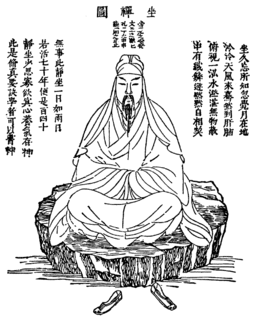
Taoist meditation, known in Chinese as "Xiu Dao", refers to the traditional meditative practices associated with the Chinese philosophy and religion of Taoism, including concentration, mindfulness, contemplation, and visualization. The earliest Chinese references to meditation date from the Warring States period.

Somatics is a field within bodywork and movement studies which emphasizes internal physical perception and experience. The term is used in movement therapy to signify approaches based on the soma, or "the body as perceived from within", including Skinner Releasing Technique, Alexander technique, the Feldenkrais Method, and Rolfing Structural Integration. In dance, the term refers to techniques based on the dancer's internal sensation, in contrast with "performative techniques", such as ballet or modern dance, which emphasize the external observation of movement by an audience. Somatic techniques may be used in bodywork, psychotherapy, dance, or spiritual practices.











